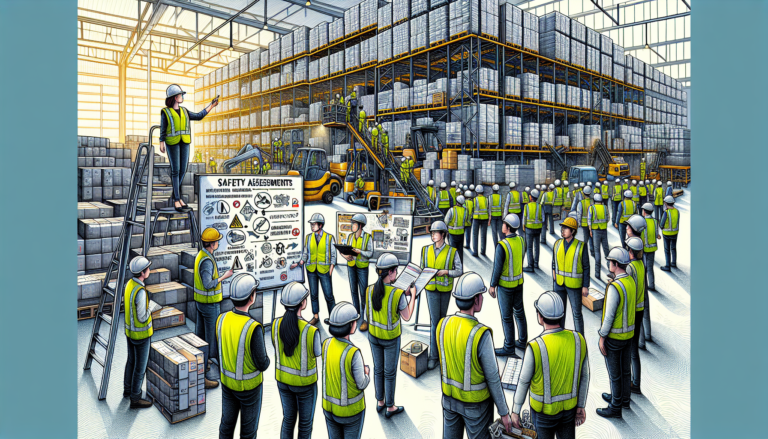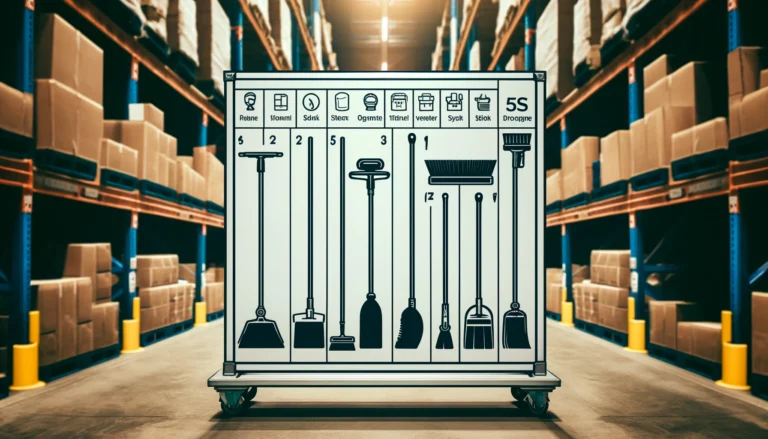Warehouse Job Titles & Descriptions: Complete 2025 Guide
Warehouse job titles aren’t just labels—they define the structure, responsibilities, and efficiency of your operation. From entry-level associates to executive roles, clear titles help employers recruit the right talent and provide employees with a roadmap for career growth. If you’re focused on developing supervisors, improving staff training programs, or building better labor management systems, understanding job titles is the foundation.

This guide breaks down the warehouse job titles hierarchy—including role descriptions, responsibilities, and how each fits into the bigger supply chain picture. Whether you’re an HR manager, operations leader, or job seeker, this resource will help you understand what each role means and where it fits.
Role Breakdowns
| Level | Titles | Reports To | Core Focus |
|---|---|---|---|
| Executive | VP Warehouse Operations, Logistics Director | CSCO/COO | Regional or division leadership, budgeting |
| Director | Warehouse Director, Logistics Director | VP | Full facility or department oversight |
| Manager | Warehouse Manager, Ops Manager, Inventory Manager | Director | Daily ops, KPIs, staffing, compliance |
| Supervisor | Warehouse Supervisor, Safety Supervisor, Team Manager | Manager | Shift leadership, performance, safety |
| Lead | Team Lead, Receiving Lead, Shipping Lead | Supervisor | Hands-on guidance, training, task assignment |
| Associate | Order Picker, Packer, Loader, Receiver, Forklift Operator | Supervisor/Lead | Execution of daily warehouse tasks |
Management Roles
Warehouse Manager → Oversees all daily operations, staffing, safety, and KPIs.
Ops Manager → Focuses on workflow optimization, scheduling, and efficiency.
Inventory Manager → Ensures accurate stock, cycle counts, and WMS oversight.
Supervisor / Team Manager → Leads a shift or team, enforces policy, and trains.
Inbound & Receiving
Receiving Associate/Clerk/Scheduler → Handle incoming freight, documentation, and dock scheduling.
Equipment Operators
Forklift Operator (Putaway) → Moves stock to long-term locations.
Forklift Operator (Replenishment) → Feeds picking locations from reserve.
Loader/Unloader → Truck loading, unloading, staging.
Order Fulfillment
Order Picker → Selects items for orders.
Order Packer → Packs and preps shipments.
Shipper/Clerk → Documentation, labeling, carrier handoff.
Safety & Security
Safety Supervisor → OSHA compliance, safety drills, audits.
Security Supervisor → Access control, theft prevention, surveillance.
Specialists
WMS Analyst → Optimizes warehouse systems, integrations, and reporting.
QA Manager → Inspections, audits, product quality.
Continuous Improvement Specialist → Lean/Six Sigma, process optimization.

Technology & The Future of Job Titles
Automation, robotics, and AI are reshaping titles. Expect to see more hybrid roles, such as Robotics Technician, Warehouse Data Analyst, or Automation Coordinator. Humans remain essential for leadership, problem-solving, and oversight.
FAQs
What are standard warehouse job titles?
Pickers, Packers, Forklift Operators, Inventory Clerks, Supervisors, and Managers are common.
What is the warehouse job titles hierarchy?
It runs from Associate → Lead → Supervisor → Manager → Director → VP.
What does a Warehouse Supervisor do?
They manage a team, enforce safety, and ensure orders are completed on time.
What are good titles for warehouse workers?
Common entry-level titles include Warehouse Associate, Order Picker, and Forklift Operator.
What are warehouse manager titles?
Warehouse Manager, Operations Manager, and Inventory Manager are common.

Wrap-Up
Clear job titles help warehouses operate efficiently and provide employees with a clear career path. Use this guide to structure your team or explore the next step in your warehouse career.
👉 Also read: Warehouse Supervisor Job Description | Warehouse Training | Warehouse KPIs






